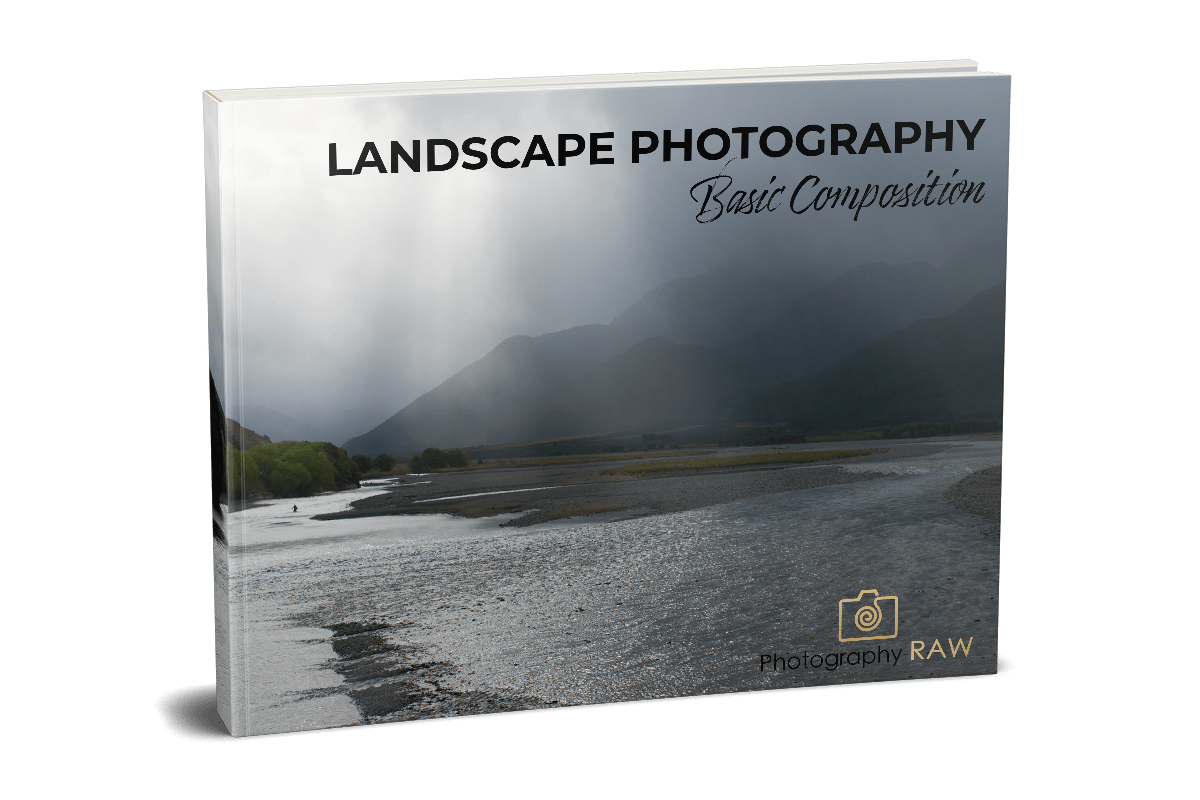Should you Choose a Carbon Fiber vs Aluminum Tripod?
Choosing the right tripod for nature photography can be difficult. If you choose the wrong one, you will end up not using it. Or worse, it can fail you when you need it to work. So if you're smart you will put a little time into finding out which tripod is the right choice for your style of photography.
Download my eBook: Basic Composition in Landscape Photography - for Free
Should you Choose Aluminum vs Carbon Fiber
Quick verdict: If you can afford it go for a carbon fiber tripod. If not choose a high-quality aluminum alloy tripod. Avoid cheap and low-quality tripods. You will usually have to replace it with a better one within the first year. A high-quality tripod can last for decades if you take good care of it. So this is by far the best way to spend your money.
Weight and Portability
If you are going to carry your tripod to get to your location you will need to carry all of your gear including your tripod.
A bulky and heavy tripod will become a hassle to carry, resulting in your deciding to manage without on occasions where it could be useful to have it.
Carbon fiber tripods are light weight compared to their aluminum counterpart. In terms of portability, there is no difference between the two.
A collapsible tripod is great, but avoid giving this higher priority than stability.
Tripods with legs that have four leg sections are a little more unstable than those with legs divided into three sections.
The weight savings you get from a carbon fiber tripod can be well worth it if you plan on carrying your tripod a lot or also use it as your travel tripod.
Winner: Carbon fiber
Photo by Manfrotto.com
Stability
You will find that aluminum tripods generally have more stability for the same reason they lose in the category above: Added weight.
Heavier tripods are more stable and not as easily moved due to wind. Because of their lightness carbon fiber tripods often end up being top-heavy when you place a heavy camera and a long telephoto lens on top of it.
Make sure you place the tripod firmly on the ground and use the hook at the bottom of the center column to hang your heavy camera bag to counteract this, to eliminate this drawback of carbon fiber tripods.
Winner: Aluminum
Stiffness
Every slight vibration that travels from the ground through your tripod and up to your camera can result in camera shake. Since carbon fiber is much stronger than aluminum it also means it doesn’t transmit vibrations as easily.
Even the tiniest amount of camera shake can result in a ruined photo, and after all, that is actually what you try to avoid in the first place by having a tripod. Carbon fiber tripods are stiffer.
Winner: Carbon fiber
Longevity
If you take care of your tripod it will outlive several camera models and lenses. High-quality tripods matter whether they are made from aluminum or carbon fiber can last a very long time.
Even if you are a bit rough with it from time to time a tripod can take usually ensure it, however, carbon fiber is stronger. But with high-quality tripods this is likely too close to call.
Winner: draw
Photo by Manfrotto.com
Corrosion Resistance
In landscape photography, it is not uncommon to position your tripod half submitted in water if this is what it takes to get the shot. This also means that your exposure the tripod to the road of corrosion. Aluminum doesn’t corrode the same way as steel, however, over time it will start to oxide, especially in scratches.
Wiping down your tripod after exposing it to the elements and salt can help protect your tripod, and prolong the life of your tripod a great deal.
Winner: carbon fiber
Tripod Head
Many tripods come with a tripod head. Therefore you should also make sure that the tripod head is capable of meeting your requirements. Can you fine-tune the pan and tilt precisely enough? And make sure that you can replace the tripod head. Many landscape photographers also do wildlife photography or macro photography and therefore need to change the tripod head to maybe a gimbal head instead of the usual ball head.
Does it Give You The Flexibility You Need
Even though it isn't directly related to choosing between carbon fiber or aluminum tripods, you should of course consider the flexibility of the tripod.
What is the maximum height of the tripod when it is fully extended? Will it be enough for the type of photography that you do? You should also consider the leg-locking mechanism.
Do you prefer twist locks or screw locks? Can you get additional rubber feet if you lose one (it has happened to me on several occasions with multiple tripods, both with cheaper tripods and those with a higher price tag).
Price
Carbon fiber has a higher price point than aluminum without a doubt and for a reason. But if you don’t have the extra money to spend then it doesn’t matter if the quality is better.
Winner: Aluminum
Concluding words
Overall I suggest you get a carbon fiber tripod even though it is more expensive than aluminum. However, aluminum tripods are a great choice if you are just starting in photography, and need to cash out for a lens and camera as well. But avoid the cheapest tripods, as the saying goes: Buy quality once, garbage twice.



